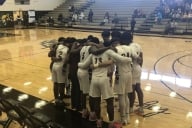You have /5 articles left.
Sign up for a free account or log in.
While most of the public often focuses on big-time college sports, not much attention is paid to the generally less competitive Division III institutions and trends in their athletics.
But James C. Hearn, a professor and interim director for the Institute of Higher Education at the University of Georgia, wanted to go beyond the headlines and scandal that some major programs -- men’s basketball and football, typically -- have experienced, given only a fraction of athletes participate at the most elite level.
He worked with the Council of Independent Colleges to analyze its member institutions -- more than 600 of them -- and their athletics profiles to see how they have either added or changed sports since the early 1990s. Many CIC institutions field Division III teams -- about 47 percent compete at that nonscholarship level of the National Collegiate Athletic Association.
Many CIC member institutions have over the past two decades increased the number of sports offered on their campuses, and participation rose considerably, Hearn found. In 1992, the median number of athletes participating at CIC institutions was 240, versus in 2015 when the number rose to nearly 400 athletes. At some small, private institutions as many as a third, or even half, of the students participate in athletics.
“There was an explosion of student participation,” Hearn said in an interview with Inside Higher Ed.
Hearn and a team of his researchers collected National Collegiate Athletic Association participation data from 1991-1992 and 2014-2015 academic years, as well as U.S. Department of Education data from the Integrated Postsecondary Education Data System from the 2003-04 and 2014-15 academic years. The data set allowed them to examine 614 institutions. The report notes that sometimes students will be replicated in the count if they played more than one sport, but that did not significantly influence the findings.
He said that the increase in women’s sports, such as golf and lacrosse, was quite striking, but men’s teams also saw gains. Women’s lacrosse, for example, jumped from a little more than 20 percent of CIC institutions offering it (in 1992) to nearly 60 percent three years ago. Liberal arts colleges in the Midwest have used lacrosse to woo students.
While most CIC institutions do not rely on athletics as big revenue generators for them, as some larger and more successful Division I universities do, some sports can indirectly have a financial benefit, Hearn said.
For instance, “greenfield sports” such as golf, lacrosse and soccer, for both genders, and field hockey for women, tend to attract wealthier students who played the sports at their high schools, Hearn said. That’s because these sports can often be more expensive to field and for travel at the high school level, so those students who want to continue on at the college level will likely be more affluent. The percentage of institutions offering these sports also varied by geography.
The average number of greenfield sports at CIC institutions increased from 2.8 in 1992 to 4.5 in 2015. Hearn recommended that colleges consider investing in these sports because it would tend to bring in wealthier students.
Meanwhile, sports such as men’s wrestling have declined in popularity. The percentage of CIC institutions offering it dropped about 10 points, from 30 percent in 1992 to 20 percent in 2015. Hearn said that while he and his researchers did not analyze the uptick in certain sports and the drop in others, he said in this case it was because wrestling has gained a poor reputation over the past couple of decades, being in the news for injuries and more.
In terms of participation, Hearn noted that the less selective CIC institutions tended to have higher rates of participation. At about 36 percent of the least selective institutions, 30 percent or more of their undergraduates were athletes.
Compare this to the most highly competitive institutions, where only about 21 percent of them had 30 percent or more of their undergraduates participating in athletics.
Hearn said the major takeaway from the data is that no “one-size-fits-all” approach will work for smaller institutions attempting to change their athletics profile.
“They should be careful looking at aspirational peers because they’re going to need to choose sports that fit their enrollment profile, region and so forth,” Hearn said.








